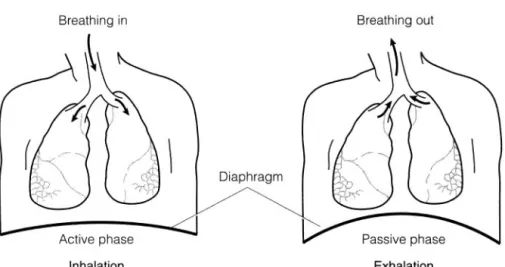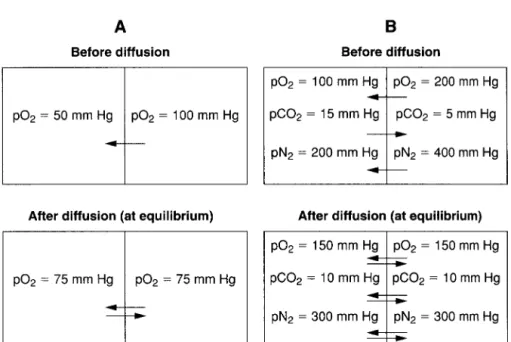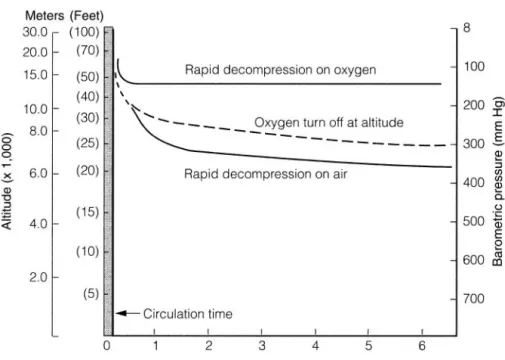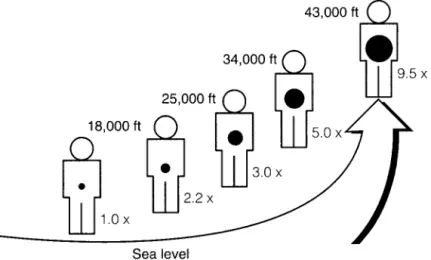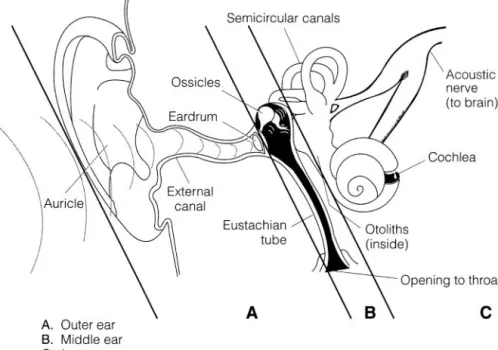Its purpose is to familiarize the pilot with the various elements of the physiology of flight in constantly changing conditions. This text also becomes a source of timeless information and should be part of the pilot's personal library.
CAUSE AND EFFECT
Unlike medicine, contributing factors (the events in a chain of events) are mentioned in the final results, but often minimized or buried in the report itself.
ACCIDENT OR INCIDENT
If conditions become hazardous (storms, aircraft, rapid ATC changes, computer errors, etc.), the alerting pilot can stay ahead of developments and declare an emergency if necessary. These "Gotchas" are exactly the situations that allow a recoverable event to develop into an accident - the final event.
DEFINITIONS OF HUMAN FACTORS AND FLIGHT PHYSIOLOGY
Of course, the pilot's airmanship is directly related to whether or not there is any human factor in the flight. It is the human element of human factors and safe flight, and has a direct effect on performance.
THE “SHEL” MODEL
In other words, if the pilot is not medically airworthy, the rest of the system model will be affected. If the pilot is impaired, his or her medical airworthiness will affect all the interfaces.
INCAPACITATION/IMPAIRMENT
This distraction can include worrying about an issue at home, focusing on a yellow warning light, looking at another aircraft, listening to a conversation, and many other scenarios that virtually take the pilot out of the flying loop. In a sense, the pilot is incapacitated because he or she is not actively participating in the expected duties and involvement.
FLIGHT SURGEONS AND AVIATION MEDICAL EXAMINERS (AMEs)
As mentioned in the introduction, knowledge about the physiology of the body in the flying environment further increases safety. A common and common form of pathology of any part of the body is inflammation.
THE NERVOUS SYSTEM
Signals from different parts of the brain are transmitted to the rest of the body by a bundle of nerves called the spinal cord, which are located in the bony protection of the spine. The signals to and from the brain are transmitted to the various organs, cells and parts of the body via the series of smaller individual nerves in the peripheral nervous system.
THE MUSCULOSKELETAL SYSTEM
The body reacts instinctively without your intervention, usually with the brain processing data many times faster. The skull houses the brain and most of the sensory organs, the chest contains the lungs and heart, and the pelvis protects part of the stomach and supports the body by being attached to the legs.
THE GASTROINTESTINAL (GI) SYSTEM
Peristalsis does most of the work, especially if the stool (faecal material) is soft enough and stimulates the action of the large intestine. Significant tumors can cause obstruction of the GI tract with few symptoms leading to the recognition of even a partial obstruction.
THE METABOLIC SYSTEM
If more water is ingested than needed, the kidneys will allow more to pass out of the body in the form of urine. Because the pancreas is stimulated by the presence or absence of the right kind of food, diet becomes a particular problem.
THE CIRCULATORY SYSTEM
Rhythm problems can also develop, which compromise the efficiency of the heart's ability to move blood. The elasticity of the artery wall helps keep blood pressure more constant during the period when the heart muscle relaxes between beats (contractions).
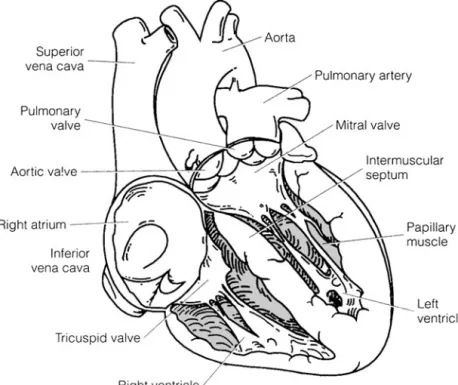
RESPIRATION
Oxygen-rich blood is then pumped through the arteries of the circulatory system to the tissues and individual cells. THERE ARE THREE DIFFERENT PARTS TO FLY: the airplane (or “aerospace vehicle”), the pilot, and the environment in which the pilot lives and flies (the atmosphere).
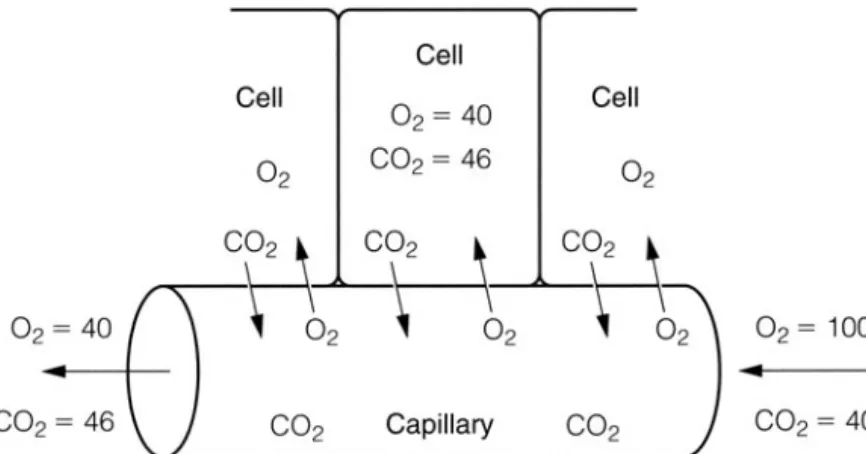
COMPOSITION OF THE ATMOSPHERE
As mentioned earlier, water vapor is not considered one of the components of the atmosphere. In the 1980s, this ozone layer became a controversial topic in connection with the protection of the layer against radiation.
PHYSICAL CHARACTERISTICS OF THE ATMOSPHERE
Temperatures will also change depending on the season, as the tropopause is higher in summer than in winter. Ninety-nine percent of the Earth's atmosphere, by volume of gases, exists below 20 statute miles (32 km).
GAS LAWS
Dalton's law states that the total pressure of a gas mixture is the sum of the individual pressures (also called partial pressures) that each gas would exert if it alone occupied the entire volume. In other words, when the pressure of a gas over a given liquid decreases, the amount of that gas dissolved in the liquid will also decrease (and vice versa); therefore, when equilibrium is reached, the tension of the dissolved gas will be equal to the partial pressure of the gas in the atmosphere to which a solution is exposed.
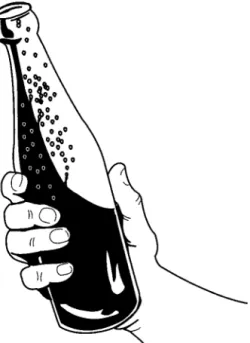
DIVISIONS OF THE ATMOSPHERE
For example, more solar energy is received by the Earth near the equator than at the poles, and this directly determines the height of the tropopause. Above the ionosphere is deep space, or the exosphere, the outermost boundary of the Earth's atmosphere.
PHYSIOLOGICAL DIVISIONS OF THE ATMOSPHERE
In some classifications of the stratosphere it is extended to an altitude of 80 km, and this additional region is sometimes called the mesosphere. This zone extends from the top of the physiologically efficient zone (40,000 feet) to approximately 50,000 feet.
GENERAL EFFECTS ON THE HUMAN BODY
The flight crew turned the aircraft north, away from the airport, under the incorrect belief that the aircraft was south of the airport. How many times have you gotten lost, communicated on the tower frequency instead of the departure frequency, or arrived at the wrong runway or airport.
SITUATIONAL AWARENESS DEFINED
But little is indicated about the underlying or contributing causes, which are the early links in the accident chain that have not been identified and therefore not broken. This is where hypoxia, fatigue, self-medication, stress and other human factors must be included when it comes to pilot training in CRM and pilot error prevention.
COMPONENTS OF SITUATIONAL AWARENESS
Probably the best example of loss of SA is controlled flight into terrain (CFIT), which is common in accident reports and statistics. Although the likely cause may be CFIT due to loss of SA, there must be an explanation for why situational awareness has been lost.
CAUSES AND CLUES OF LOST SITUATIONAL AWARENESS
PREVENTION OF LOST SITUATIONAL AWARENESS
E=Assess the effect of the action on the change and on the progress of the operation. The doctor diagnosed the symptoms as hypoxia, something the pilot never considered at the time of the flight.
THE PHYSIOLOGY OF OXYGEN IN THE BODY
Part of the evaluation included some engine output performance that included loss of casing pressure. Some minor flight problems kept the pilot going for several minutes at a cabin altitude of 12,000 feet.
REVIEW OF RESPIRATION PHYSIOLOGY
A relatively common occurrence in the winter months is the influx of skiers from the "lowlands" to the higher elevations of the ski slopes. The higher the altitude of the cabin (whether pressurized or not), the higher the risk of becoming hypoxic.
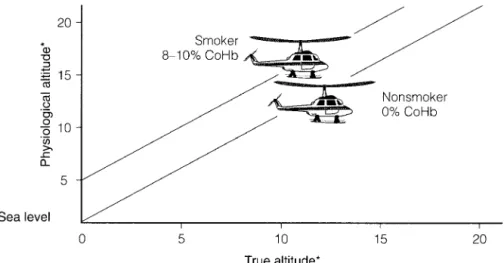
CARBON MONOXIDE AND OZONE
As with hypoxia, the treatment is immediate 100% oxygen; however, this treatment is an extremely slow process, with high concentrations of carbon monoxide decreasing over several days. When carbon monoxide poisoning is diagnosed, treatment is often in a hyperbaric chamber with 100 percent oxygen.
DECOMPRESSION OF CABIN ALTITUDE
Although the symptoms of hypoxia and carbon monoxide poisoning look the same, going to 100 percent oxygen will not immediately relieve the symptoms of carbon monoxide poisoning as it would with hypoxia hypoxia. Usually occurring on smaller, high-flying aircraft, this is not a common occurrence and there is little you can do about it other than get oxygen immediately.
TRAPPED GASES
Problems arise when the Eustachian tube does not allow air to pass through, usually due to swelling of the mucous membranes due to colds or hay fever. The pain is now worse due to the negative pressure in the middle ear.
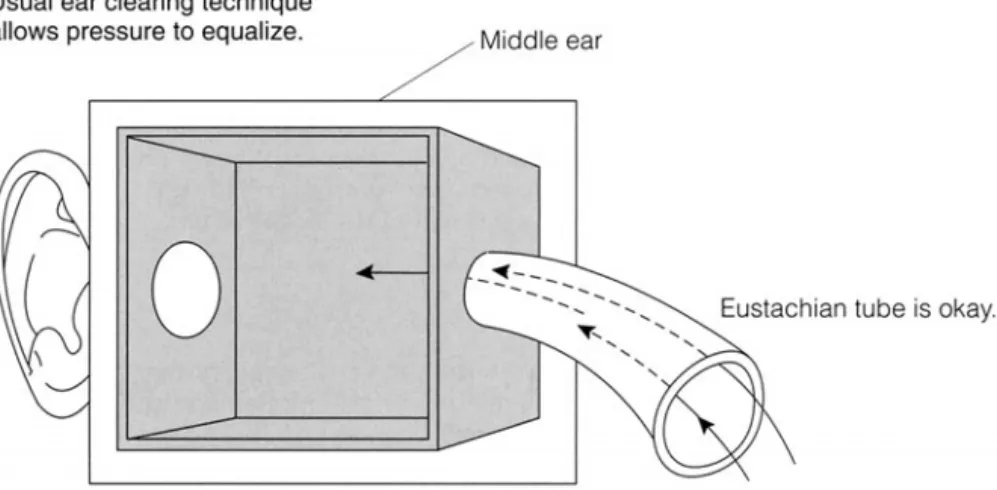
EVOLVED GAS DISORDERS
Breathing 100 percent oxygen before takeoff lowers the partial pressure of nitrogen in the body over time. She called the FBO to ask when her first student was, but couldn't hear the answer: “Did you say 9:15 or 9:50?” The coordinator had to repeat the time twice before she understood it.
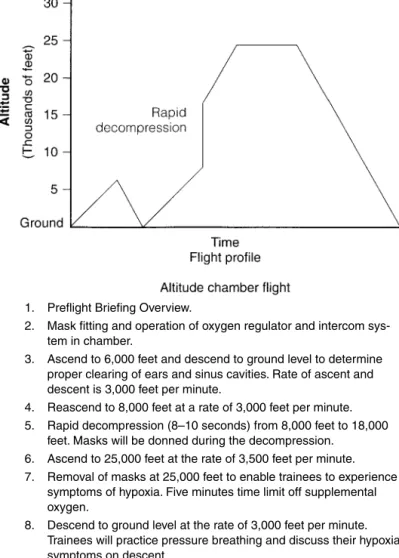
ANATOMY AND PHYSIOLOGY OF THE EAR
This impulse is then transmitted to the brain via the cochlear nerve (also called the acoustic or auditory nerve). This movement is transmitted by the ossicles to the cochlea, which accentuates the energy (by leveraging their joints) when it reaches the window of the cochlea.
DEFINITION OF SOUND
Tinnitus, or ringing in the ears, is very common, often the result of some degree of insult or damage to the cochlear nerve. Because sound is energy, it follows that short periods of intense sound are potentially physically damaging to the organs of hearing.
DEFINITION OF NOISE
Not all noise should be ignored, and it is crucial that you are aware of the source of the noise and what it means. Tinnitus is especially noticeable at night, when one wakes up and becomes aware of the ringing or hissing.
PERCEPTION OF SOUND
MEASUREMENT OF HEARING
NOISE AND HEARING LOSS
As unprotected exposure to noise continues, there is an increasing risk of impairment, particularly in the higher frequencies. This threshold shift is not noticed by the pilot because there is no change in the pilot's perception of sound, plus it happens over several years.
OTHER TYPES OF HEARING LOSS
HEARING CONSERVATION
Noise is a distraction and can be blocked out with earplugs without sacrificing the ability to hear important sounds. ASRS did not report whether the headphones masked the obnoxious scraping sounds that followed the lifting of the equipment.”
VIBRATION
7 Vision
The same applies to older pilots (over 45) who start using reading glasses for the first time. Also, pilots with 20/20 day vision may not have adequate night vision due to the physiology of how the retina converts light energy into electrical energy for the brain.
THE LIGHT SPECTRUM
Chronic overexposure to ultraviolet rays is now thought to be a cause of cataracts, a clouding of the lens of the eye. Light rays (or energy) reach the eye either directly from a light source or indirectly, as reflected from a source (such as water or snow) back to the eye.
ANATOMY OF THE EYE
Anatomy of the Eye 103 The current is sent via the optic nerve to the brain, where it is deciphered into a meaningful signal. The iris is the colored membrane at the front of the eye that determines eye color.
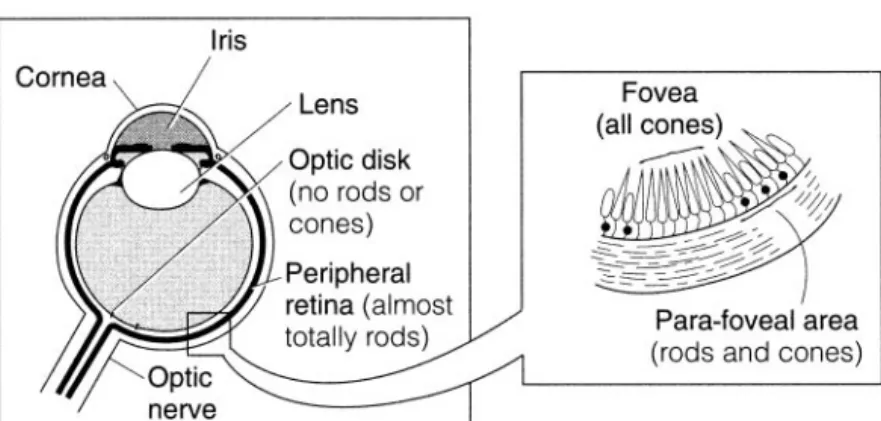
OPTICS AND PHYSICS OF LIGHT
CORRECTION OF ACUITY
The refractive power of a lens can be measured to determine how well it can focus. The overall definition of a lens' ability to focus is called the refractive error. Plano is essentially perfect refraction.
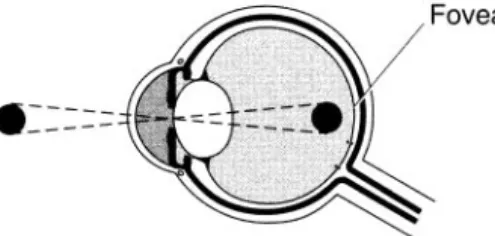
CORRECTION WITHOUT GLASSES OR CONTACTS
The eyes do not become stronger if you do not wear glasses with the belief that the eyes are forced to maintain sharpness. Although this could be compared to building muscles by using them more often, this is not the case for the eyes.
NIGHT VISION
A very bright light, such as a flashlight directly into the eye for just a second or strobe lights on an airplane, can seriously impair night vision. The more severe the intensity and the longer the exposure, the more reduced the initial night vision may be.
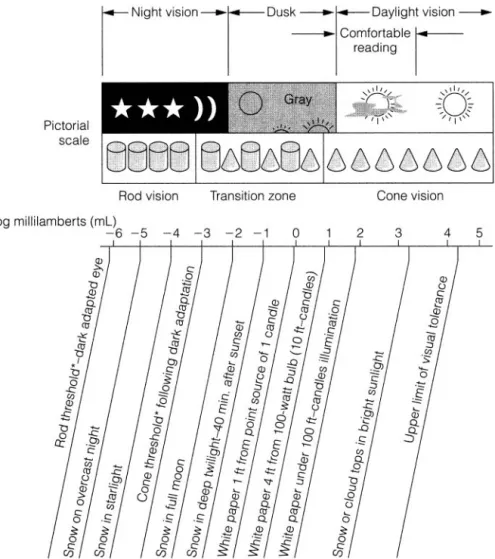
FACTORS AFFECTING VISUAL ACUITY
VISUAL SCANNING
In fact, as we look over the crowd and try to see as much as possible, the eye automatically stops for a split second and then moves to the next "scene" (saccadic movement). Furthermore, only our central (voveal) vision will see everything in focus, meaning we visualize a target straight before moving on to the next.
VISUAL ILLUSIONS AND MISPERCEPTIONS
This is true whether you scan the sky for traffic, scan the instruments for changes in performance, or when reading this text. Unfortunately, we don't practice the same technique on the plane - it's harder than you'd think - because we often don't know what we're looking for and what to focus on.
BLACK HOLES AND WHITEOUTS
There are no shadows to give texture to the terrain, nor is it possible to separate the horizon from the ground. Helicopter pilots have unique problems in this situation; they are disoriented by the illusion of vection (see Chapter 8) and are also unable to see the ground.
SUNGLASSES
Regardless of the color of the lens, other colors will be washed out when they enter the eye. It can reduce the total amount of light passing through the glasses without compromising color cues.
ULTRAVIOLET RADIATION
Afterwards, the co-pilot informed Mark that he assumed Mark was making a course correction when he banked the aircraft to the right. AT the beginning of this textbook it was stated that the greatest physiological challenge facing the pilot and his or her fitness to fly is the prevention of medical disability.
DISORIENTATION
DEFINITION OF DISORIENTATION
These senses often work in concert and will be discussed in terms of how they can provide correct, accurate, but occasionally misleading signals. Next, the cumulative and simultaneous effects of various cues relating to the illusions experienced by pilots will be described.
TYPES OF DISORIENTATION
Whatever the reason, the perception of extended time, for example, is real in the pilot's mind during the decisive event. If the turn is coordinated and not abrupt, there is minimal misinformation to the pilot.
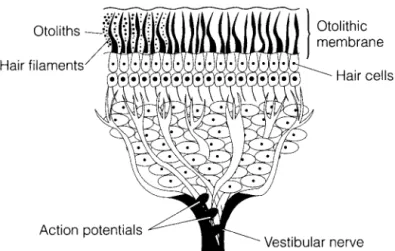
VISUAL ILLUSIONS
From a visual perspective, the illusion for the pilot is either a climb or a descent when he has no view. The reverse illusion, known in helicopter flight in an autorotation, is the pilot's intuitive response to change direction and/.
TOLERANCE TO DISORIENTATION AND ILLUSIONS
An ascending runway gives the illusion that it is high on the approach, and the pilot flies the approach too low (center). The pilot can deal with these situations of disorientation and illusions by keeping the currency in familiar aircraft.
FLICKER VERTIGO
When you have to consciously think about what to do in circumstances where you have acted instinctively, this is a symptom of potential impairment and intolerance of illusions.
MOTION SICKNESS
Various medications are available over the counter and by prescription; however, there is little reliability or predictability from person to person. Although all drugs and medications, whether prescription or over-the-counter (OTC), are evaluated for safety by the FDA (Food and Drug Administration) before being released for sale to the public, very few are evaluated for their effect on performance in a flight environment; therefore, there is little scientifically proven knowledge of how any illness, medication, or habit will affect the pilot during flight.
SELF-DIAGNOSIS
If you think you are not very sick, then it is very tempting to assume that you are fine as long as you can take care of the symptoms with these OTC medications. Because of the variety of causes, some potentially serious, a headache should not be minimized in terms of importance.
OVER-THE-COUNTER MEDICATIONS
It is unusual if there is any comment about healing or dealing with the cause of the symptoms. In flight, the side effects of the medication can be worse than the symptoms and the causes you are treating.
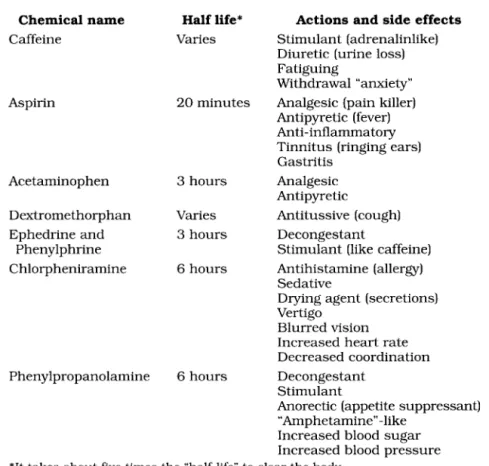
CAFFEINE
Because of the additional chemical theophylline, tea can be a stronger diuretic than the same amount of coffee. One of the most serious but subtle side effects affects mental functions, known as caffeineism.
MISCELLANEOUS ABUSES
So it's wise to ground yourself for a few days, see if the medicine is doing its job, and see if there are any side effects or not. If the disease is under control and there are no side effects, a return to flying status may be in order.
PHYSICAL CONDITION
It is essential that you follow the required dosage and frequency and fully understand the possible side effects so you know what to expect. Ask your personal doctor for the necessary information and advice and let him or her know that you are a pilot.
ALCOHOL AND DRUGS
One review of studies concludes: “The idea that there is a safe level of alcohol consumption below which there are no harmful effects. The effects of a hangover are different from the direct effects of alcohol on the body, as described earlier.
